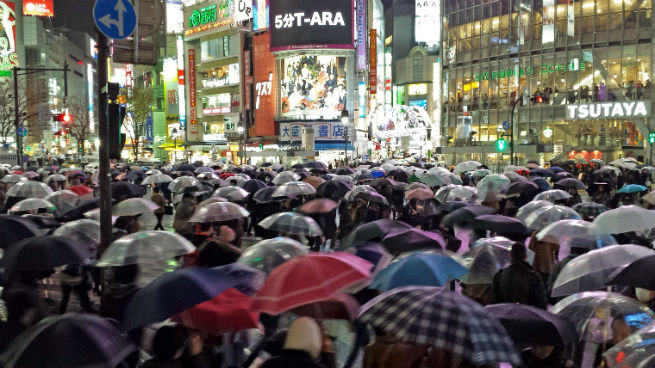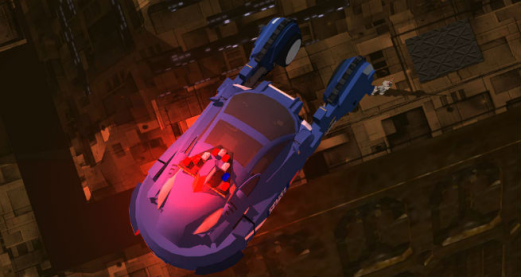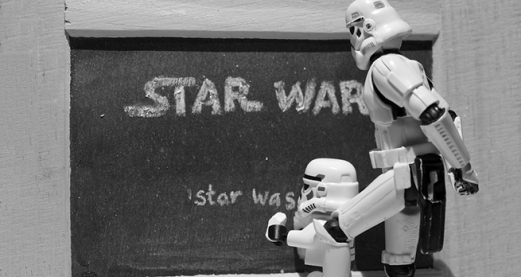It’s not every day that Harrison Ford features in discussions about urban planning, but for the second time on TheCityFix, Han Solo née Indiana Jones née Rick Deckard is at the center of futuristic visions for urban design. Ford plays the main character in Ridley Scott’s 1982 cult classic Blade Runner. The film is based on Philip K. Dick’s 1968 novel Do Androids Dream of Electric Sheep?, and both the film and novel take a dark, apocalyptic spin on the ideals of urban futurism. Set in a dystopian Los Angeles in 2019, Blade Runner is both a sci-fi inspired action film and a look forward at the potential future of cities.
 Modern Tokyo bears a striking similarity to the world of Blade Runner
Modern Tokyo bears a striking similarity to the world of Blade Runner
On the surface, Blade Runner’s appeal to the science fiction community is not hard to see. Understanding its relevance to the urban planning community, however, takes a more nuanced approach. We’re not the first ones to note Blade Runner’s bold urbanist vision. Urban critics as well as the mainstream media have commented on the role of urban space and the city’s “neon-laced decay” in shaping the mood of the film. Los Angeles, in all its futuristic grit, plays the sidekick to Harrison Ford’s steely protagonist.
The density of Los Angeles, and other oxymorons
The Los Angeles of Blade Runner is notable for its stark contrast with the Los Angeles of today. Set 30 years in the future at the time of release, the city is all but unrecognizable save for iconic landmarks like the Bradbury Building. Blade Runner’s Los Angeles has a dense urban core with towering skyscrapers piled next to one another. It features street-level open air markets and restaurants. Freeways are conspicuously absent and the streets are for pedestrians only. Granted, cars fly through the sky instead of on the ground and it’s hard to call a city laden with toxic waste and murderous robots walkable, but it’s still a far cry from the sprawling, car-centric Los Angeles we know today.
The city as a machine
Blade Runner offers a profound, and in many ways alarming, vision of the city of the future. Scott, who directed the film in the context of discussions about post-industrial society, used industrialist imagery to convey the city as an enormous machine. The replicants central to the film’s plot, the metal and glass exteriors of the city, and the constant presence of smoke and pollution reaffirm the exaggerated industrial qualities of the film’s Los Angeles. Furthermore, the only animals in the film are fake, signaling a heightened dichotomy between the built and natural environments.
Cultural synthesis on a whole new level
The Los Angeles of today is known as a melting pot, home to a wide variety of ethnic, religious, and cultural backgrounds. Historically, however, the city has been segregated along racial and socioeconomic lines. While Blade Runner may not present a more socially just or equitable Los Angeles, it portrays a city marked by the fusion of these cultural influences rather than their separation. Larger than life billboards projected onto the sides of building feature primarily Asian women, language takes a uniquely urban shape in the form of hybrid cityspeak, and one scene even shows Jews, Hare Krishnas, and punk rockers sharing a cracked city sidewalk.
A look into the crystal ball for cities?
Since its release, many urban critics have interpreted Blade Runner as a warning: ‘If we do not change our ways, this dystopia is what we are headed for,’ they say. In some ways, they’re right. This side-by-side comparison of a still from the film and an actual photo of Beijing in 2013 certainly raised some eyebrows. However, not all of Scott’s sci-fi vision has actually come to fruition. Los Angeles is as sprawling as ever, we’re closer to the self-driving automobile than we are to cars that fly, and the threat of a replicant rebellion is, well, not really a threat at all. The true influence of the film is not that it forecasted the urban future, but that it provided an example jarring enough to help redefine that future. That, and the final scene is absolute cinematic gold.
This article was originally published at The City Fix under a CC-BY-NC-ND licence


Rate and Review
Rate this article
Review this article
Log into OpenLearn to leave reviews and join in the conversation.
Article reviews